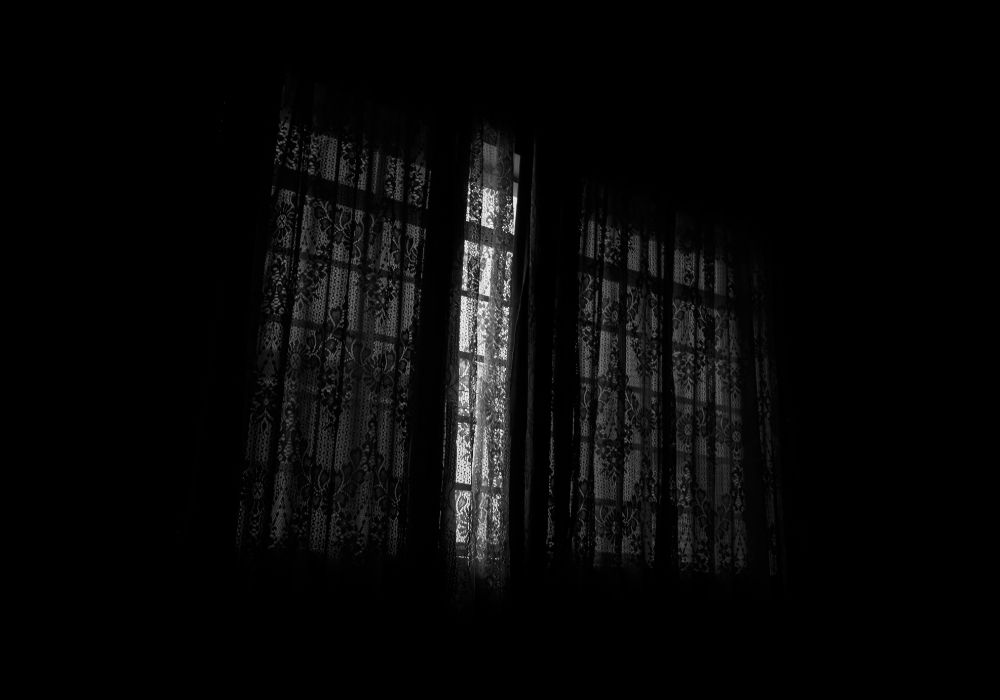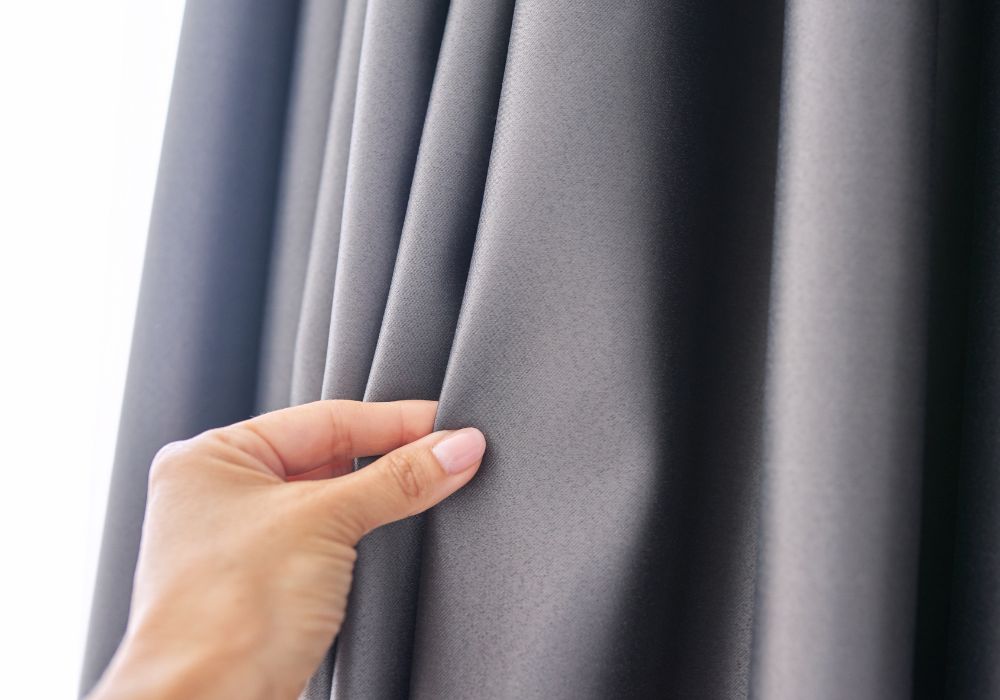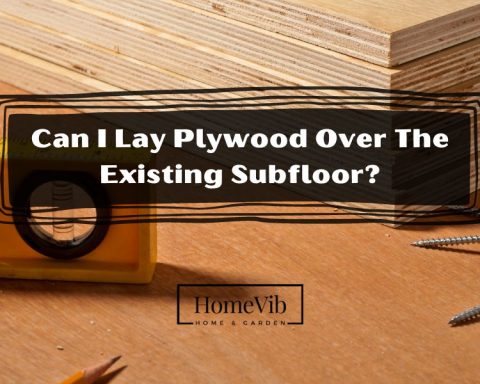To block light from the top and sides of curtains, you can implement various effective methods that will not only darken your room but also enhance privacy and improve sleep quality.
Properly blocking out light is essential, especially for those who work night shifts or have sensitive sleep patterns.
When sunlight or exterior light sources seep through the gaps around the edges and top of curtains, it can disrupt the overall ambiance of a room.
In this guide, we will explore some practical and simple techniques to ensure that your curtains provide maximum light blockage, creating a cozy and restful atmosphere any day.
6 Ways To Block Light From The Top And Sides of A Curtain
There are several clever and effective ways to banish that unwanted brightness and reclaim your room’s ambiance and privacy.
These six fantastic methods will block light from the top and sides of a curtain, ensuring you can create a dark, cozy, and restful space at any time of day.
1. Install a Cornice Board
A cornice board is a decorative wooden or foam board that can be customized to match your room’s decor.
Cornice boards are installed above the curtain rod, and their design creates a tight seal against the wall, effectively preventing light from seeping in through the gap between the curtain rod and the wall.
Not only do cornice boards block light, but they also add a touch of elegance to your windows.
You can choose from various shapes and designs or create a DIY cornice board project to suit your taste and budget.
2. Valance
Valances are short fabric or wooden decorative pieces that conceal the curtain rod and hardware.
They come in various styles, such as balloon valances, swag valances, or tailored valances, and they can be tailored to complement any room theme.
Installing a valance above your curtains effectively closes the gap between the curtain rod and the wall, preventing light from filtering through.
This solution blocks light and adds more sophistication to your window treatment.
3. Magnetic Tape
Magnetic tape is an excellent option if you want a quick and temporary fix to block light from the sides of your curtains.
Magnetic tape is a flexible, magnetized strip that you can easily attach to the sides of your curtains and the corresponding sides of the window frame.
The magnetic force keeps the curtains snug against the wall, leaving no room for light to sneak in.
This solution is beneficial for renters or those who frequently change their curtains, as it is easy to apply and remove without causing any damage to the curtains or the window frame.
4. Wrap Curtains Around the Rod
A simple yet effective way to block light from the sides of your curtains is to wrap them around the curtain rod.
Instead of hanging the curtains straight down, cover the outer edges of each panel around the sides of the rod.
This creates a tighter closure on each side, leaving less space for light to penetrate. To enhance the light-blocking effect, use curtain tiebacks or clips to hold the wrapped portion securely.
This method works well with various curtain types and is accessible without requiring additional materials.
5. Use Wider Curtains
Opting for wider curtains is a practical approach to block light from both the top and sides of your windows. When selecting curtains, choose ones wider than the actual window frame.
This allows the curtains to extend beyond the window edges, effectively covering any gaps where light could enter.
Wider curtains create a more substantial barrier against light infiltration, ensuring a darker and more relaxing environment.
Additionally, wider curtains can give the illusion of more oversized windows and add a touch of grandeur to your living space.
6. Pair Curtains With Blinds
For the ultimate light-blocking solution, consider pairing your curtains with blinds. Blinds are versatile window treatments that can be adjusted to control the light entering the room.
Combined with curtains, you create a double layer of defense against light intrusion. During the day, you can close the blinds to block most of the light, and during the night, draw the curtains to provide additional darkness and privacy.
This dynamic duo gives you complete control over light levels and adds a sophisticated, layered look to your windows.
Other Things To Do To Let Less Light Inside Around Curtain Edges
Sometimes, improper installation or positioning can lead to light leaks, even with suitable curtains.
Addressing these issues ensures that your curtains fulfill their purpose, creating a cozy and dim atmosphere in your living space.
Get The Right Size Curtains

One of the primary reasons for light leaks around curtain edges is using curtains that are too small for your windows. When curtains don’t fully cover the window frame, they leave gaps for light to penetrate.
To rectify this, ensure that you choose curtains wide enough to extend beyond the edges of your window frame. Measure the width of your window and add a few extra inches on each side to ensure adequate coverage.
Moreover, opt for curtains long enough to reach the floor or windowsill, as too short can also allow light to sneak in from below.
You can use blackout curtains specifically designed to block out light effectively. These curtains often have an extra layer of lining or coating that enhances light-blocking properties.
With the right size and blackout features, your curtains will create a robust barrier against unwanted light intrusion.
Curtains Not Installed Properly
Proper installation is crucial to maximizing the light-blocking capabilities of your curtains. When curtains are not hung correctly, they may leave gaps between the curtain rod and the wall, allowing light to seep through.
Use sturdy curtain rods long enough to extend beyond the window frame to prevent this. This ensures that the curtains can be pulled closer to the wall, reducing the possibility of light leaks.
Loose or improperly placed curtain rods may cause the curtains to sag, leaving openings for light to filter in. Regularly inspect and adjust the curtain hardware to maintain an effective light-blocking setup.
Curtains Are Too Far From The Wall

Another common oversight that leads to light leaks is having curtains that hang too far from the wall. When curtains are too far away, they can’t create a snug seal against the wall, allowing light to enter from the sides.
To fix this issue, adjust the position of the curtain rod and push it as close to the wall as possible. Doing so ensures that the curtains can cover the entire window area and prevent any light from seeping through the gaps.
You can also use curtain holdbacks or tiebacks to pull the curtains closer to the wall and maintain a tight closure.
These decorative accessories add a touch of elegance to your curtains and serve a functional purpose in keeping light at bay.
Do Light Blocking Curtains Work?

Light-blocking or blackout curtains are designed to reduce external light entering a room. Made from thick, opaque fabrics with special coatings, they effectively minimize light infiltration.
While they may not block 100% of light, they create a darker environment suitable for bedrooms, home theaters, and nurseries.
Proper sizing, installation, and complementary light-blocking solutions like blinds can further enhance their effectiveness.
Do Pelmets Block Out Light?
Yes, pelmets can block out light. Pelmets are box-like structures installed above curtains or blinds, creating a seal at the top of the window.
This seal prevents light from seeping through the gap between the window treatment and the wall, effectively blocking out external light and enhancing the room’s darkness.
Cheap Alternatives To Blackout Windows
Whether you’re a light-sensitive sleeper or need to create a cozy atmosphere, these cheap and easy solutions will transform your room into a calming haven in no time.
1. Cardboard
Cardboard is an economical and surprisingly effective light-blocking material. Cut pieces of cardboard to fit the size of your window and affix them to the window frame.
Ensure they cover the entire glass area, leaving no gaps for light to sneak through. You can use adhesive strips or Velcro for a temporary solution or permanently secure them with screws or nails.
While cardboard may not be as aesthetically pleasing as other options, it is an excellent short-term or DIY fix, especially for renters or those on a tight budget.
2. Aluminum Foil
Aluminum foil is another cost-effective alternative for blocking out light. Like cardboard, cut pieces of aluminum foil to match your window’s size and attach them to the frame.
The reflective surface of the foil effectively bounces light back, keeping it from entering the room.
For a temporary solution, you can use double-sided tape to stick the foil to the window, or for a more lasting fix, use spray adhesive.
While aluminum foil may not be the most elegant option, it can be surprisingly effective, particularly in spaces where you need to control light quickly and on a budget.
3. Dark Fabric
Consider using dark fabric to block light if you prefer a more visually appealing option. Look for heavy, light-blocking materials like blackout curtains, felt, or velvet.
You can hang the fabric over the window using a tension rod or staple it to a wooden frame custom-made to fit your window.
Layer the fabric to create a thicker light barrier for a better result.
Dark fabric blocks light effectively and add a touch of style and sophistication to your room decor, making it a popular choice for those seeking both function and aesthetics.
4. Window Film
Window film is a versatile and affordable option for achieving blackout-like effects. Blackout window films are available in various designs and levels of opacity.
They are typically self-adhesive and can be easily applied to the window glass. The film blocks incoming light and also provides added privacy during the day.
Additionally, window films can help regulate temperature and reduce glare. They are a semi-permanent solution that can be easily removed, making them ideal for renters and homeowners.
5. Blackout Curtains
Investing in blackout curtains is a practical and efficient way to block out light without expensive window replacements.
Blackout curtains are designed explicitly with thick, light-blocking materials and multiple layers to minimize light infiltration effectively.
They come in various styles, colors, and sizes to suit your room decor and window measurements.
Blackout curtains are easy to install, and their versatility makes them suitable for bedrooms, living rooms, or any space where light control is essential.
6. Blackout Blinds
Blackout blinds are another popular alternative for achieving darkness without the expense of blackout windows.
These blinds are designed to block light effectively when closed, providing optimal night and privacy. They come in various styles, including roller, vertical, and honeycomb blinds.
They are available in different materials and colors to match your interior design. Blackout blinds are easy to operate and offer excellent functionality and cost-effectiveness.









